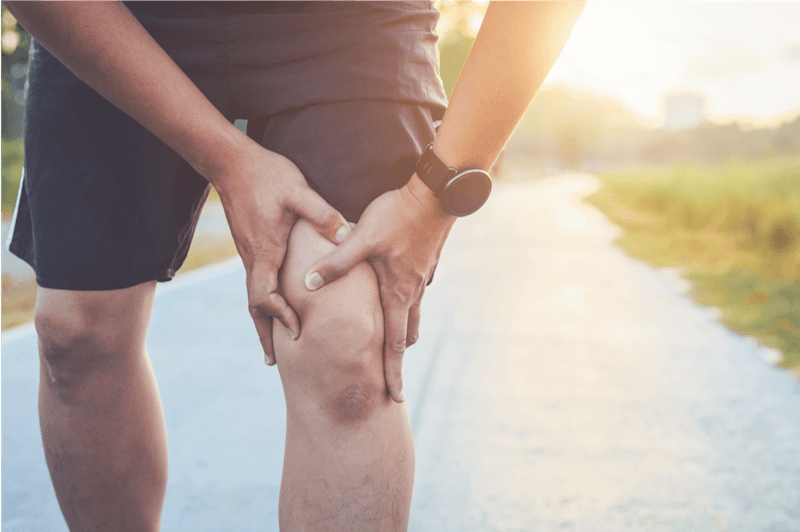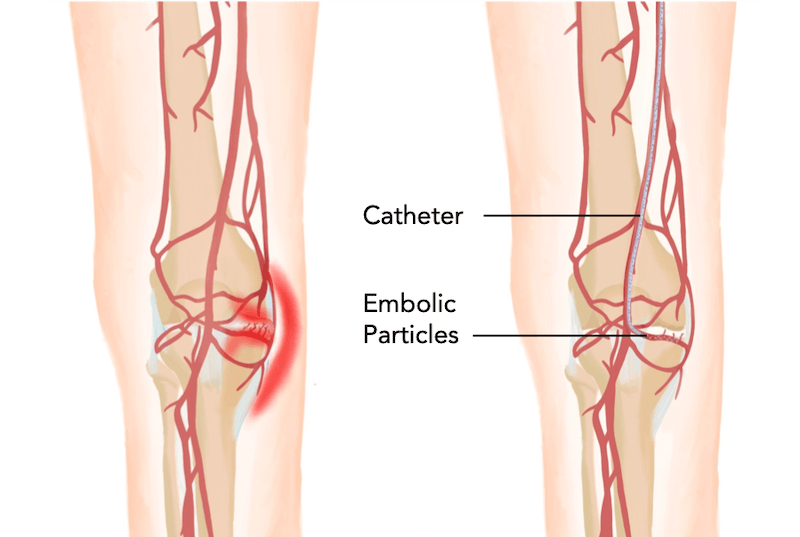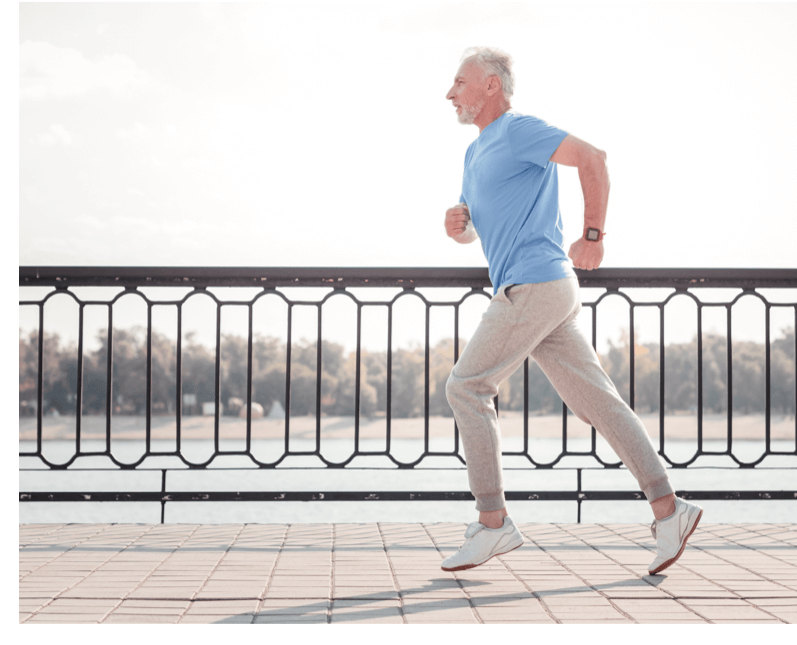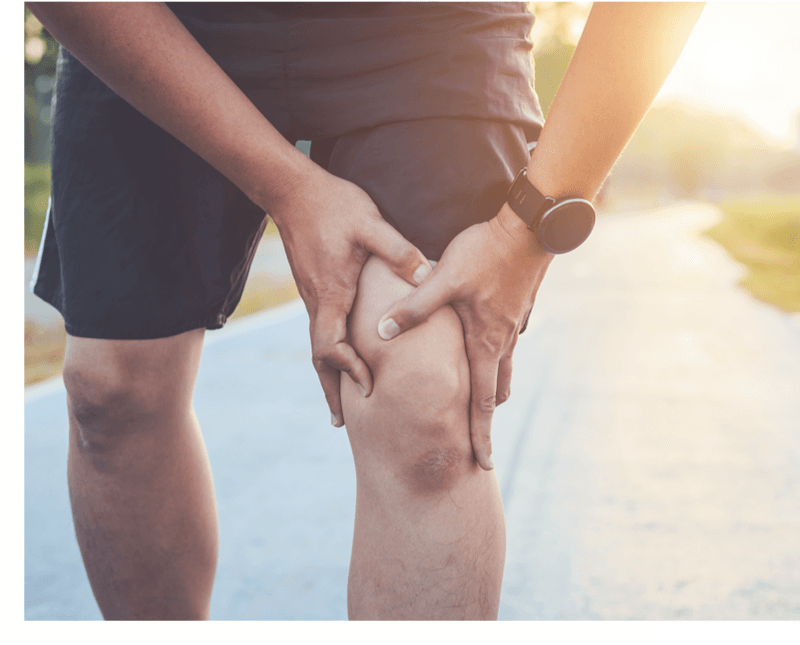Though knee osteoarthritis is irreversible, being more aware of your movements can slow progression and prevent further wear and tear. If your job puts strain on your knees, consider ways to modify how you do it. If you jog or run, seek out soft surfaces rather than pavement. Vary your fitness routine with low-impact exercises like swimming or cycling. These preventative strategies focus on minimizing excess pressure on the knee joints. By reducing the daily strain on your knees, you can lessen pain, improve mobility, and potentially help preserve joint function over time.
Carrying extra weight puts additional stress on your knee joints, which can worsen osteoarthritis symptoms. Achieving and maintaining a healthy weight eases this pressure and can lead to less pain, better mobility, and improved overall joint health. Approaches to weight management may include balanced nutrition, portion control, and regular low-impact exercise—all helping to keep your knees as healthy and pain-free as possible. Losing even a small amount of weight can significantly decrease knee pain from osteoarthritis.
Targeted strength exercises focus on building the muscles that support and stabilize your knee—especially the quadriceps (front of the thigh) and hamstrings (back of the thigh). Stronger muscles help absorb shock and take pressure off the joint, which can reduce pain and improve overall function. Working with a physical therapist or following a carefully designed exercise routine at home can make a significant difference in managing knee osteoarthritis and helping to maintain mobility over time.
Physical & Occupational Therapy
Physical therapy for knee osteoarthritis typically involves tailored exercises and manual therapy techniques designed to strengthen the muscles supporting the knee, improve flexibility, and reduce pain. A physical therapist may also teach you proper movement patterns and suggest strategies (like pacing activities, using adaptive equipment, and making ergonomic changes) that help protect the joints. By integrating these exercises and techniques into your routine, you can enhance mobility, manage symptoms, and potentially slow the progression of osteoarthritis in your knee.
Knee Osteoarthritis Pain Relief in Los Angeles
Medications can help control knee pain and inflammation, making it easier to stay active and perform daily tasks. Common examples include over-the-counter pain relievers like acetaminophen or nonsteroidal anti-inflammatory drugs (NSAIDs), and in some cases, stronger prescription drugs. It’s important to use these medications under a doctor’s guidance to find the safest, most effective option for your individual needs, and to minimize side effects or risks.
Some people explore non-traditional or complementary treatments to manage knee osteoarthritis symptoms. Examples of alternative therapies for knee osteoarthritis include:
Topical Creams with Capsaicin: Capsaicin, derived from chili peppers, can block pain signals when applied to the skin, offering localized relief.
Acupuncture: This ancient practice involves placing thin needles into specific points on the body. Some individuals report reduced pain and better knee function afterward.
Supplements: Oral supplements like glucosamine, chondroitin, and SAMe are sometimes taken in the hope of supporting joint health. While research shows mixed results, many people believe that they are helpful for easing stiffness or discomfort.
Always discuss these options with your doctor to ensure they’re safe and appropriate for your situation, and to integrate them effectively alongside other treatments for the best results.
A knee brace can help stabilize the joint and redistribute pressure in a way that reduces pain and stiffness. Braces come in various styles—some provide extra support around the kneecap, while others offload weight from a particular area of the knee. By easing stress on certain parts of the joint, a knee brace may allow for more comfortable movement and help with everyday activities. It’s usually best to consult a healthcare professional for guidance on the most suitable brace and proper fit.
Injections into the knee can help alleviate pain and improve function in people with osteoarthritis, though results vary. Here are the main types:
Corticosteroid Injections: Corticosteroids are powerful anti-inflammatory medications. When injected into the knee, they can rapidly reduce swelling and pain. However, relief may only last a few weeks or months, and frequent use isn’t recommended due to potential side effects that can weaken tissues.
Hyaluronic Acid (Viscosupplementation): Hyaluronic acid is a gel-like substance naturally found in joint fluid. Injections aim to improve lubrication within the knee joint, potentially reducing friction and pain. Some patients experience increased comfort and better mobility, though the degree of benefit varies from person to person.
Platelet-Rich Plasma (PRP): PRP injections use components of your own blood to encourage healing. Though research is still evolving, some people with osteoarthritis report reduced pain and improved joint function. This approach is considered more specialized and may not be covered by all insurance plans.
Stem Cell or Other Biologic Injections: These treatments use cells or growth factors intended to promote tissue repair. Although early results are promising for some patients, more high-quality research is needed to confirm their long-term safety and effectiveness. These therapies are often not covered by insurance and can be expensive.
Always discuss with your healthcare provider which type of injection (if any) is right for you. They’ll help weigh possible benefits, risks, and costs, and determine how injections fit into your overall treatment plan.
Genicular Artery Embolization
Genicular artery embolization (GAE) is a minimally invasive procedure that’s ideal for patients that have struggled to find relief with less invasive therapies and would like to avoid the challenges of major knee surgery. Genicular artery embolization targets the small arteries supplying your knee. Tiny particles are used to partially block these blood vessels, reducing excess blood flow and inflammation around the knee joint. This can help ease osteoarthritis pain and improve mobility, especially for patients who haven’t experienced sufficient relief with medications, physical therapy, or injections.
Genicular Artery Embolization in Los Angeles
Genicular artery embolization therapy for knee osteoarthritis.
While many people with osteoarthritis find relief through non-surgical approaches, surgery may be recommended when symptoms become severe or other treatments aren’t effective. Here are the most common surgical options:
Arthroscopy: This minimally invasive procedure involves inserting a small camera (arthroscope) and special instruments into the knee through tiny incisions. Surgeons can remove loose pieces of cartilage or bone that may cause pain or catching, and smooth out rough cartilage surfaces. Arthroscopy can help some individuals, but its effectiveness for osteoarthritis varies, and it’s typically considered for mild to moderate damage.
Osteotomy: In this procedure, a surgeon cuts and reshapes bones around the knee to shift weight away from the worn-out part of the joint. Osteotomy can be an option if only one side of the knee is affected and you’re relatively active. It can delay or sometimes prevent the need for a full knee replacement by redistributing pressure on the joint.
Partial Knee Replacement: If only one section (compartment) of your knee is significantly damaged, a surgeon may replace just that part with an artificial implant. Because less bone and tissue are removed, recovery can be faster and the knee may feel more natural compared to a total replacement. However, it’s only appropriate if the rest of the knee is relatively healthy.
Total Knee Replacement: A surgeon removes damaged bone and cartilage throughout the knee joint and replaces them with metal and plastic implants. This procedure is typically reserved for advanced osteoarthritis affecting multiple parts of the knee, and it often leads to significant pain relief and better mobility. Recovery requires a commitment to rehabilitation and physical therapy, but many people regain function and return to activities they enjoy.
At ProVascularMD, we can help determine which treatment approach is best for your situation, taking into account the severity of your osteoarthritis, your overall health, and your lifestyle goals. Get relief from painful knee osteoarthritis. Contact us today to schedule your visit!







